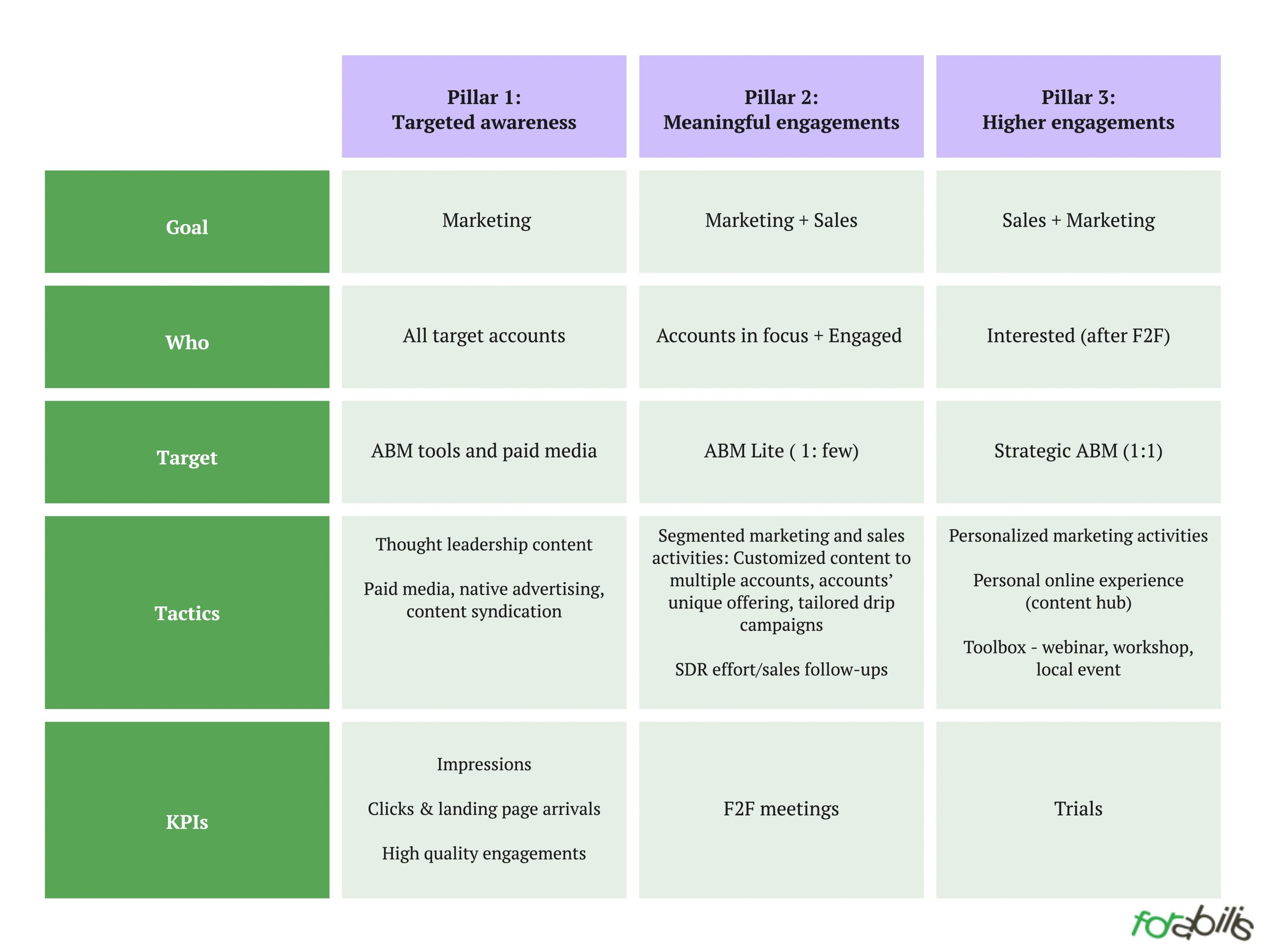How We Use ABM to Target Competitors’ Customers [1 – intro]

Approaching the ABM Challenge
We received an intriguing challenge from one of our clients, a leading Threat Identification company — generate sales-qualified leads targeting the customers of our competitors. This was a dream project for us. We’ve done ABM campaigns in the past, but this one allowed us to hone our skills even further.
Since ABM is a term widely used, here’s how Forabilis defines it: ABM is account-based targeting for sales, focusing purely on accounts — not on individuals. To achieve this marketing and sales have to work closely together. Using ABM, we zone in on the quality of the accounts we target, instead of the traditional marketing approach which focuses on the number of leads. Essentially, what we try to do is to focus on accounts that have displayed interest in the solution category (in this case, through usage of competing solutions) rather than simply delivering MQLs.
Now, here’s what’s cool about targeting competitors’ accounts: These accounts have the budget, they know what they’re looking for in a solution, and what’s not working for them in the solution they are already using. So, they are well past the awareness phase. Because they are unique in that sense, we knew we had to rethink our channels, our messaging, and the content we serve them.
How We Look at the ABM Framework and Why
We look at ABM holistically, as a 3-Pillar process. It starts with marketing as the sole owner, then transitions to marketing playing the leading role while working with sales, and, finally, with marketing moving to support sales in their efforts to generate opportunities. Each phase is aimed at driving the accounts down the funnel. Each phase has its own goals, targets, tactics, and KPIs.
Sample ABM 3-Pillar Framework

Pro Tip: Shortcuts don’t work. While there is lots of pressure from management and from sales to deliver the accounts faster, and skip, for example, Pillar 2, your role as a marketing leader is to push back. Remember, you should deliver quality, not quantity.
What an ABM Process Plan Looks Like
An ABM campaign takes a while to plan. We started with a short discovery process to be able to better define our target personas and target accounts, as well as understand the competition. We were looking for “hooks” that would enable us to create specific messaging, based on unique value compared to the competition. Together with the planning phase, we’re looking at 4-6 weeks.
Setting up Pillar 1 would take 4-6 weeks, and that would include finding the right tech stack for the project, building the account lists, defining the content and creating it. You need to run the awareness campaign, which is Pillar 1, for at least 12 weeks to get the results you need to move to Pillar 2. And while it’s running, in parallel, you can prepare for Pillar 2. The same goes for Pillar 3 — you prepare it while running Pillar 2. At some point, all three pillars run in parallel, with continuous optimization. Pending budget, of course.
General ABM Process Plan
#1 Discovery: Target audience, definition of target accounts, personas, messaging, marketing and sales content audit (2-3 weeks)
#2 Planning: Funnel, KPIs, channels, martech stack, tools, timeline and budget (2-3 weeks)
#3 Execution Pillar 1: Setup, execution and optimization (12 weeks)
#4 Execution Pillar 2: Setup, execution and optimization (*12 weeks)
#5 Execution Pillar 3: Setup, execution and optimization (*12 weeks)
#6 Campaign summary: Evaluation, post mortem
*Partially in parallel with previous phase
Pro Tip: Don’t be afraid to toss aside existing marketing and sales content for fresher, more appropriate content for each pillar. Remember, you have a highly targeted account list that has a competing solution already implemented. Tailor the content per the competition’s weak points. Tell them a new story, based on what they are lacking in their current solution.
Interested in learning how we built the target account list and the tech stack for an ABM campaign? Read on Part 2